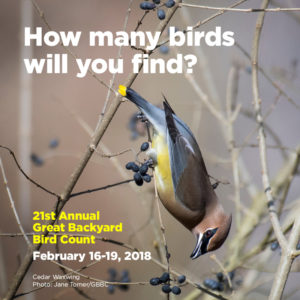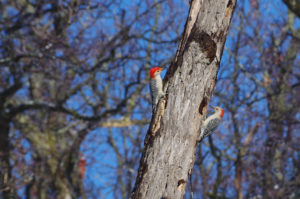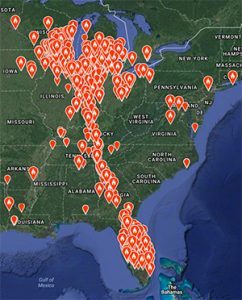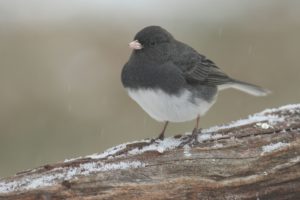 2018 has been designated “The Year of the Bird”, and beginning today, Friday, February 16, 2018, bird lovers around the world will grab their binoculars, fill their bird feeders, update their eBird app, and look toward the skies. The 21st Annual Great Backyard Bird Count, one of the largest and longest running citizen science projects, begins today, and you can be part of this grand event of data collection.
2018 has been designated “The Year of the Bird”, and beginning today, Friday, February 16, 2018, bird lovers around the world will grab their binoculars, fill their bird feeders, update their eBird app, and look toward the skies. The 21st Annual Great Backyard Bird Count, one of the largest and longest running citizen science projects, begins today, and you can be part of this grand event of data collection.
All it takes is a mobile device (or computer) to log your results, an account at gbbc.birdcount.org , and 15 minutes of your time during the four-day event.
Can’t tell a red-tailed hawk from a red-winged black bird? That’s okay. The GBBC web site provides a handy online bird guide. The web site also provides a guide for tricky bird IDs, including: Which Red Finch is it, Identifying Some Common Sparrows, and Identifying Doves.
I recently spent some time talking to Brian Schneider, one of the educators at the Aldo Leopold Nature Center in Monona, WI, to get some tips for first-time birders.

His big piece of advice: “Don’t get overwhelmed trying to identify the bird you see for a half second before it flies off.” Other tips include:
- Start small: Watch a feeder in your backyard. Sit down for 15 minutes and try to spot at least one species.
- There are many good apps available to help you identify birds. One that Brian recommends is the Merlin Mobile Bird ID from the Cornell Lab of Ornithology. This app provides a list of birds most likely to be seen in your area at the time of year you are watching.
- Find a good bird book for your area. A book that sorts by color or shape is helpful.
- When thinking about size, compare the bird you are viewing to the American Robin. Is it bigger, smaller or similar to a Robin?
- Sometimes, a point-and-zoom camera can be a big help, because it gives you a picture to look more carefully at later to help with your bird ID.

So what does the backyard bird count yield for the scientists who are studying bird populations and ecosystems? Last year, more than 200,000 people submitted observations of nearly 6,000 species and provided the largest snapshot of global bird populations ever recorded.
In 2014 the GBBC described the influx of Snowy Owls into the northeastern, midAtlantic and Great Lakes regions of the US. Our local paper was carrying stories of people seeing these birds, but the GBBC helped to reveal the larger event. Last year, the GBBC showed the early migration of many birds, such as the red-winged blackbird, as a result of the unseasonably warm February in 2017. Mapping the reports of Sandhill Cranes from the GBBC revealed the migration route of the Florida Sandhill Crane population into the Midwest United States.
In Wisconsin during the bird count, we will likely see many species of woodpeckers, including red-bellied and downey woodpeckers, cardinals and blue jays. All of these birds overwinter in Wisconsin. Raptors are active in Wisconsin and red-tailed hawks are abundant. You might even see barred owls and great horned owls.

One fun thing to do is look for birds that spend their winters in Wisconsin but spend their summers where it’s cold, like the dark-eyed junco. (Yeah, I know, I think Wisconsin is a little chilly in the winter too.)
So, where will you be watching and counting this year? Let us know what birds you see!
Michele Arduengo
Latest posts by Michele Arduengo (see all)
- An Unexpected Role for RNA Methylation in Mitosis Leads to New Understanding of Neurodevelopmental Disorders - March 27, 2025
- Unlocking the Secrets of ADP-Ribosylation with Arg-C Ultra Protease, a Key Enzyme for Studying Ester-Linked Protein Modifications - November 13, 2024
- Exploring the Respiratory Virus Landscape: Pre-Pandemic Data and Pandemic Preparedness - October 29, 2024
